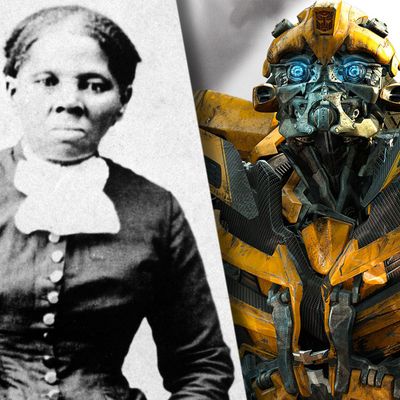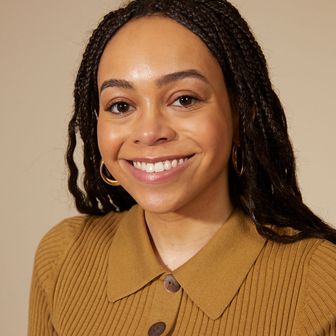
In Transformers: The Last Knight, Anthony Hopkins’s Sir Edmund Burton gleefully explains the Transformers’ complicated history to his pupils, Cade Yeager (Mark Wahlberg) and Vivian Wembley (Laura Haddock). They’re all members of the Order of the Witwiccans, which is tasked with working with the bots and keeping their presence on earth a secret. All through history, it turns out, the Transformers have been an invisible hand, guiding us all to goodness.
Hopkins’s walls are lined with memorabilia, photos of autobots standing with soldiers during the American Revolution and sitting with samurais. According to the Transformers writers room — comprised, no doubt, of one half-finished Monster energy drink, a rejected Ken doll, and whichever Chainsmoker scored lower on the AP World History exam — Albert Einstein and Frederick Douglass were card-carrying members of the Order, and it’s implied that the bots have secretly fought on the morally correct side in most of the famous wars in human history. And then, Transformers: The Last Knight really goes for it: Another member of the Order, Hopkins mentions, was none other than Harriet Tubman.
*Record scratch* *Freeze frame* Yep, that’s right — Harriet Tubman. You’re probably wondering how she ended up in this situation.
Unfortunately, the movie leaves the question of how exactly the Transformers came to the aid of a 19th-century abolitionist a mystery. Did Tubman lead slaves to freedom with Bumblebee by her side? Did the robot’s glowing eyes light their path along the Underground Railroad? Since there were no cars around, did the Transformers transform into wagons?
And the bots’ involvement, raises another historical question: Did the Transformers do enough to stop slavery? The Last Knight shows a Transformer flattening King Arthur’s foes in the early medieval era, so the robots are clearly not averse to getting involved in human conflicts. But the movie shows no evidence autobots fought to end slavery in the Civil War, or indeed, that they did anything to stop it during the hundreds of years it was practiced in the U.S. before Harriet Tubman came on the scene. Where were the Transformers during Bacon’s Rebellion, or when the Virginia Slave Codes were enacted? And when the Transformers fought alongside George Washington in the Revolutionary War, did they turn a blind eye to his own slaves? If the Transformers can defeat entire armies of Decepticons, it seems likely they would have been able to put an end to slavery had they really wanted to.
That kind of historical thinking is a little too deep for Transformers: The Dark Knight, the kind of movie that name-drops Harriet Tubman in between scenes where Mark Wahlberg jokingly calls a Latina tween “J.Lo” and gets snippy with an Oxford professor over her “stripper dress.” It’s probably expecting a little too much to ask the movie to build up a semi-coherent logic as to how Tubman even encountered a Transformer, and if she was the member of the Order who introduced a bot to Douglass, or vice versa. Still, it’s a shame we weren’t able to get any footage of exactly what the Transformers’ contribution to ending American slavery was. In a movie that already has autobots, evil bots, and dinobots, abolition-bots would have really been a sight to see.


